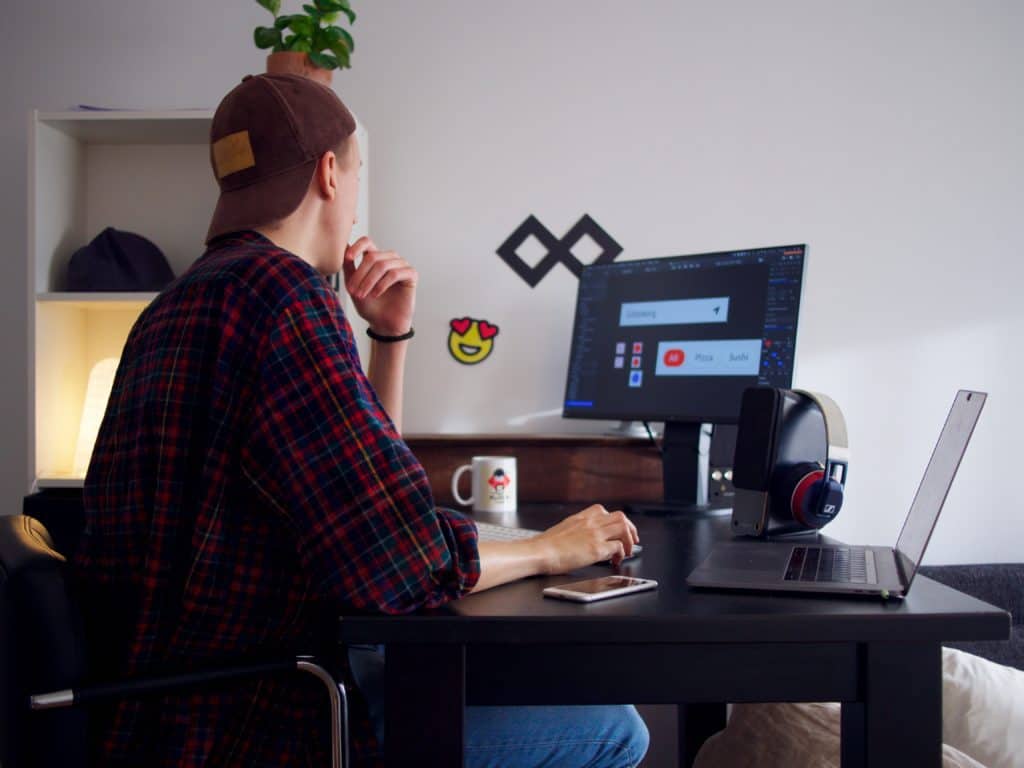How to Get Sponsored on YouTube
Six Tips to Monetize Your Content
- Last Updated Sep 30, 2020

Over the last 15 years, YouTube has cemented its place as one of the go-to video platforms on the internet. These days, becoming a YouTube creator is a perfectly viable career path. Not only is it doable it’s also extremely rewarding – both in terms of job satisfaction and finance.
The top earners on YouTube make between $28 thousand and $1.3 million per video, often from a mixture of advertising revenue and, the big one: sponsorship deals. Sponsorship deals often require creators to talk about, or promote, a certain product or service in their video. These deals come in the forms of straight-up payment, a gifted product or affiliate deals which involve the creator keeping a percentage of the profit a product they promoted makes, often through a unique link or code.
Sponsorship deals are the fastest way to make money from YouTube, with some creators making $20, 000 for one video and sometimes much, much more. But when it comes to navigating the business side of YouTube, it might not be that obvious for how you can find brands to sponsor you, or there’s a general consensus that brand deals are reserved for creators with upwards of 1 million subscribers. Here are six tips for how to get sponsored on YouTube.
Approach Relevant Brands
When it comes to looking for brands to work with – much like collaborators – you need to make sure they’re relevant to your content and personal brand. Helen Faliveno of HMFYOGA on YouTube landed herself a series of sponsored content for a seven-day yoga challenge.
Helen swears by “going niche,” or, sticking with brands who align with your own. As an example, since Helen runs a yoga channel, she aims to work with yoga, wellness, health and vegan brands. A gaming YouTuber, on the other hand, might work with technology brands creating equipment like keyboards, headphones or gaming chairs.
Jonathan Kelley, a spokesperson for Voucher Today told PCGuide that they often look to see whether a creator has promoted similar products or services and sometimes ask to pay more to change that recommendation and inform their viewers.
Essentially, don’t just try to make a quick buck by working with absolutely anyone. Making meaningful connections with brands who you trust and who your viewership will connect with too will not only keep your integrity intact, but it will also give you a better chance of a successful (and potentially repeat) brand deal.
Start with an Idea
If you’re hoping to approach a brand for the first time to ask them to work with you on a video or campaign, you need to bring value to the table. And no, I don’t just mean in terms of numbers (although that is important, we’ll come to that later), I mean in terms of offering them an idea they can’t refuse. Helen particularly finds that this works really well.
Putting some effort into your pitch will show a brand that you have actually given the deal some thought (and again, you’re not just there for a quick buck), and will also show that you’re dedicated to making it work. This will make life much easier for them, as will sending links to any relevant videos, websites and social media pages.
Focus on Growing Your Channel
Now, it isn’t all about subscribers and views – some creators are able to land brand deals with very few – however, it does matter. The number of views you get per video might be the deciding factor in whether, or how, a brand chooses to work with you.
Didier Penine who owns Say it With Champers, an online personalized champagne company, uses subscribers and viewership to decide how she chooses to sponsor a video. “If it is an individual with a moderate audience I would gift the bottle and that would feel about right,” she tells me in an email. “If it were someone with a larger readership it may be more bottles or a bottle with payment”.
Jonathan agrees, although he wants to veer away from creators with fake views. He looks at a consistently high viewership per video because, he said, “One video with a million views and others with 4k doesn’t really add up”.
The main goal for a lot of YouTubers is a large and loyal audience. This can often mean forgetting about the money for a while and focusing on the other stuff, like consistency, quality, collaborations, marketing and search engine optimization.
Quality is Key
When it comes to YouTube in general, quality is key. Having consistently high quality videos is vital to any YouTuber’s success, but it’s also something that brands look out for when scouting out potential talent. Jonathan is especially concerned with quality, and chooses not to work with any creators whose videos are less than 720p.
For ensuring high quality videos, a decent microphone, camera and good lighting will work wonders.
Personal Branding Matters
One of the core ways to grow your viewership is by working on your “personal brand” which, admittedly, as a slightly overused phrase for something that often comes quite naturally anyway. If you want to be successful, and you want to work with specific brands, you need to be conscious of the way you present yourself.
When looking at potential collaborators, Jonathan tells me that he often looks at a YouTuber’s other social media accounts too. To make sure they don’t work with someone with a bad reputation, or the potential for being canceled, Jonathan goes back by about a year on creators’ Facebook and Twitter accounts to weed out anyone “nasty”.
Be Authentic
Melanie, who founded Start-Bee, a proven method for teaching handwriting to children, has been on both sides of the coin. When what she has now created with Start-Bee was only a glimmer in her eye, with no investors and no funds, she created a YouTube video which attracted the attention of a PR company and gave her the opportunity of a lifetime. With no subscribers and a very low number of views, Melanie was able to work with BiC for over three years, accelerating her business and putting her in the position to sponsor creators herself.
Melanie’s biggest piece of advice is to stand out from the crowd. And how should you stand out from the crowd? You need to be authentic. She looks for unusual, unique and fresh videos and channels that exude raw talent. “What’s the point of everyone having the same thumbnail?” she asks. “They all look the same. No one stands out”.
When looking at potential collaborators, Melanie looks for authenticity and someone who thinks outside the box: “This is what helped me attract that PR agency and that big brand sponsor that helped to change the course of my entire life!”.
All in all, getting a sponsorship takes time. Follow these steps, don’t be afraid to reach out and, most importantly, don’t be discouraged by rejections. Rejections are completely common and can actually teach you a lot. If you keep working hard, the brand deals will come organically and your audience will thank you for it.
